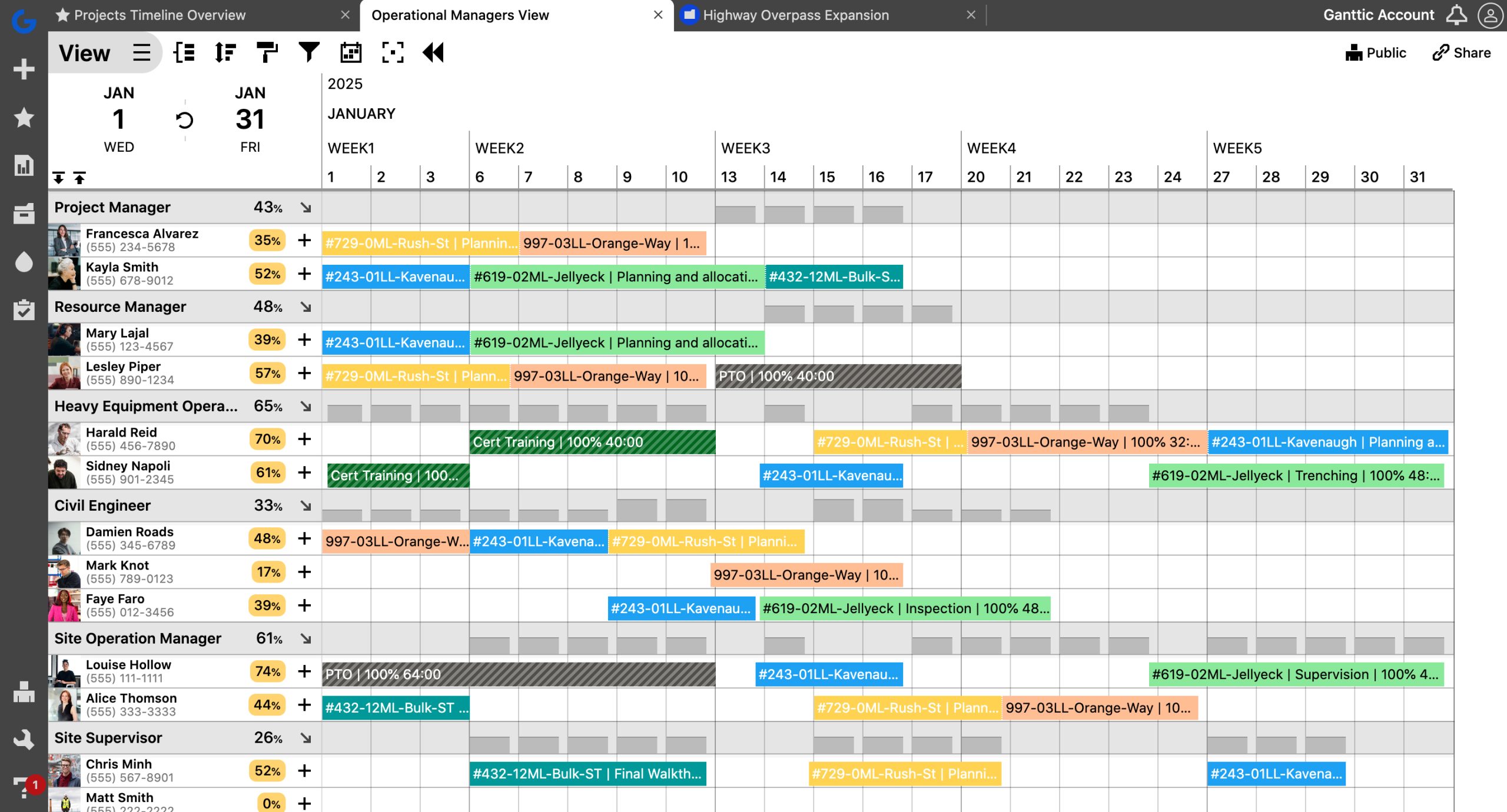When it comes to engineering projects, documentation is key. It ensures clarity, accountability, and efficiency. However, too much of a good thing can cause more harm than good—enter documentation overload.
When teams generate excessive or fragmented documentation, productivity takes a hit, leading to reduced profitability. Unlike digital documentation, which is easy to store and analyze, manual documents are cumbersome and difficult to track.
This article explores why documentation overload happens, the risks it poses, and smart strategies to reduce it—while highlighting how modern tools for engineering like Ganttic can help manage the complexity.
Why Documentation Overload Happens in Engineering
Documentation overload stems from multiple factors, including growing project complexity and outdated processes.
Regulatory Compliance Requirements
Engineering sectors such as construction and manufacturing often need to meet strict regulatory standards, such as IEC 61355-1, which standardizes how technical documentation is classified. While necessary, these regulations generate extensive documentation, complicating processes like design review.
Complex Workflows and Multi-Stakeholder Involvement
With multiple departments and subcontractors collaborating, it’s easy for documentation to balloon. Each team may create its own reports and logs, leading to duplication, version conflicts, and inefficiencies.
Lack of Standardization
Disparate tools—spreadsheets here, PDFs there, handwritten notes elsewhere—make it harder to unify and retrieve information. This lack of standardization complicates data sharing, as team members waste time converting formats into the correct version.Even though PDFs ensure consistent formatting and cross-platform compatibility, these benefits remain unrealized without a unified approach.
And without a standardized format, collaboration slows and miscommunication grows.
The Hidden Risks of Over-Documenting
Beyond inefficiency, documentation overload brings serious consequences:
- Slowed Project Delivery: More documents mean more time spent reviewing, approving, and locating the right version.
- Higher Error Rates: Redundancy increases the likelihood of conflicting data or missed updates.
- Burnout and Frustration: Constantly dealing with bloated or unclear records drains team morale.
The Link Between Documentation and Project Planning
Often overlooked is how documentation ties directly to project and resource planning. Disconnected documentation systems mean that vital info—like resource assignments, schedules, and task statuses—exists in silos, disconnected from the actual planning tools teams use.
This is where tools like Ganttic come in.
With Ganttic, documentation can live alongside project schedules and resource plans. Instead of sifting through folders, team members see the relevant notes, files, and updates directly within the project timeline. This creates a single source of truth and connects documentation to actionable work.
Strategies to Reduce Documentation Overload
1. Implement a Lean Documentation Approach
Capture only what’s essential. Avoid duplication, and use templates to ensure consistency across teams.
2. Automate Workflows
Use automation to handle versioning, status updates, and document approvals. Ganttic, for instance, links documentation with project milestones—ensuring the right data is surfaced at the right time.
3. Centralize Collaboration
Cloud-based tools allow everyone to access a unified system. Ganttic’s centralized resource planning platform ensures documentation isn’t just stored—but also contextualized within your broader project plan.
4. Role-Based Access and Visibility
Not everyone needs access to every document. Ganttic’s role-based permissions ensure that engineers, managers, and clients see only what’s relevant—reducing clutter and cognitive load.
Best Practices for Smart Documentation Management
- Define “essential” documentation for each phase or deliverable.
- Standardize your format using templates that can be reused and updated in your planning tool.
- Audit regularly to identify documentation that’s outdated or redundant.
- Foster a culture of clarity, not quantity. Ganttic can support this by making it easy to track updates and identify gaps through visual planning and reports.
A Smarter, Connected Approach to Engineering Project

Reducing documentation overload isn’t about doing less—it’s about doing it smarter. By combining lean documentation strategies with engineering resource planning tools like Ganttic, teams can:
- Centralize knowledge without overwhelming users
- Reduce time spent searching for files
- Improve decision-making with real-time visibility into the status of work, people, and plans
In engineering, documentation is critical. But when it’s tied directly to your project execution—rather than siloed off in spreadsheets and folders—it becomes a strategic asset, not a burden.